|

On eBay Now...
PRESIDENT CUBA 1925 ORIGINAL GENERAL PHOTO MACHADO CUBA VINTAGE GREAT For Sale
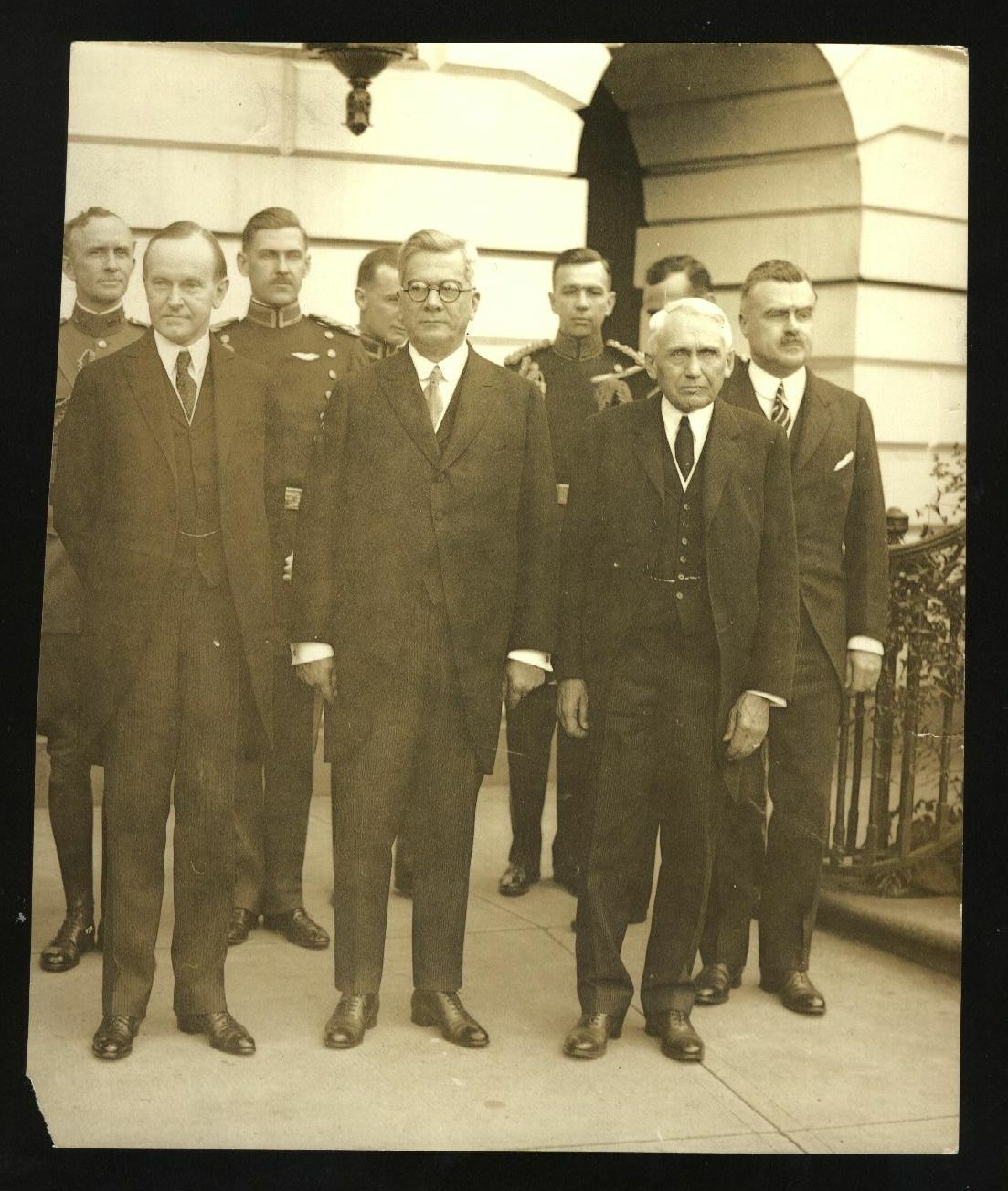
When you click on links to various merchants on this site and make a purchase, this can result in this site earning a commission. Affiliate programs and affiliations include, but are not limited to, the eBay Partner Network.

PRESIDENT CUBA 1925 ORIGINAL GENERAL PHOTO MACHADO CUBA VINTAGE GREAT:
$295.18
A VINTAGE ORIGINAL 8 X 6 3/4 INCH PHOTO FROM 1925 DEPICTING FORMER PRESIDENT OF CUBA GENERAL MACHADO
Gerardo Machado y Morales (28 September 1869 – 29 March 1939) was a general of the Cuban War of Independence and President of Cuba from 1925 to 1933.
Machado entered the presidency with widespread popularity and support from the major political parties. However, his support declined over time. Many people objected to his running again for re-election in 1928, as his victory violated his promise to serve for only one term. As protests and rebellions became more strident, his administration curtailed free speech and used repressive police tactics against opponents.
Ultimately, in 1933, Machado was forced to step down in favor of a provisional government headed by Carlos Manuel de Céspedes y Quesada and brokered by US ambassador Sumner Welles. Machado has been described as a dictator.
Gerardo Machado y Morales, (born Sept. 29, 1871, Camajuaní, Cuba—died March 29, 1939, Miami Beach), hero in the Cuban War of Independence (1895–98) who was later elected president by an overwhelming majority, only to become one of Cuba’s most powerful dictators.
Gerardo Machado y MoralesGerardo Machado Y MoralesSee all mediaBorn: September 29, 1871 CubaDied: March 29, 1939 (aged 67) Miami Beach FloridaTitle / Office: president (1924-1933), CubaLeaving the army as a brigadier general after the war, he turned to farming and business but remained active in politics, heading the Liberal Party in 1920. His election to the presidency in 1924 was welcomed by most Cubans, especially the middle class, who thought a sensible businessman would restore order to Cuba’s disrupted society. To counteract economic depression caused by declining sugar prices, Machado instituted a massive program of public works but was accused of enriching himself at public expense. In 1927 he seized control of the Cuban political parties. He was reelected in 1928, despite heated opposition from students and professional men, and began to rule even more dictatorially. Disorder became widespread, and in 1933 U.S. Ambassador Sumner Welles, under instructions from Pres. Franklin D. Roosevelt, tried to mediate between Machado and opposition forces, but a general strike was called, and even the army demanded Machado’s ouster. He was forced into an exile (August 12) from which he never returned.
Gerardo Machado y Morales (1871-1939) was a general in Cuba\'s War for independence of 1895-1898 against Spain. Later elected president, he developed into a harsh dictator.
Gerardo Machado was born in Santa Clara, Las Villas Province, on Sept. 28, 1871. He spent his childhood on his family\'s cattle estate, attended private schools, and in his early 20s engaged in growing and selling tobacco. During Cuba\'s Ten Years War (1868-1878) against Spain, Machado\'s father had joined the Cuban rebels, attaining the rank of major. Machado followed in his father\'s steps, and when the Cubans resumed the war in 1895, he enrolled, rising to the rank of brigadier general.
After the war ended, Machado turned to politics and business. He became mayor of Santa Clara and during José Miguel Gómez\'s administration (1909-1913) was appointed inspector of the armed forces and later secretary of interior. Soon after, he engaged in farming and in business and, together with American capitalists, invested in public utilities. He grew wealthy, returning to politics in the early 1920s. He won control of the Liberal party and, with his slogan \"Water, roads, and schools,\" was elected president in 1924.
Reform PresidentMachado\'s first administration coincided with a period of prosperity. Sugar production expanded, and the United States provided a close and ready market. Machado embarked on an ambitious public works program which included the completion of the Central Highway, the construction of the national capital, the enlargement of the University of Havana, and the expansion of health facilities. He also sponsored a tariff reform bill in 1927 providing protection to certain Cuban industries. Despite these accomplishments, Cuba\'s dependence on sugar continued, and United States influence and investments increased.
Before his first administration ended, Machado sought reelection. Claiming that his economic program could not be completed during his 4-year term and that only he could carry it out, Machado announced his decision to have himself reelected and to extend the presidential term to 6 years. He prevented the growth of political opposition by controlling the Conservative party and the small Popular party. Through bribes and threats he subordinated Congress and the judiciary to the executive will, and in 1928 he was reelected over virtually no opposition.
Repression and ReactionMachado\'s second term was fraught with problems. Affected by the shock waves of the world depression and oppressed by an increasingly ruthless dictator, many Cubans, led primarily by university students, organized resistance to the regime. In 1931 former president Mario García Menocal led a short-lived uprising in Pinar del Río Province. That same year an anti-Machado expedition landed in Oriente Province, only to be crushed by the army.
As urban violence increased, so did repression. Machado\'s police raided secret meeting places, arresting students and opposition leaders, whom they tortured or killed. The United States, attempting to find a peaceful solution to Cuba\'s political situation, sent special envoy Sumner Welles to mediate between government and opposition. The mediation was supported by most political factions and leaders with the exception of the conservatives and, particularly, the students. Welles\'s efforts finally led to a general strike and an army revolt which forced Machado to leave the country on Aug. 12, 1933. Machado settled in the United States and died in Miami Beach, Fla., on March 29, 1939.When Gerardo Machado y Morales was born on September 28 1871, the Ten Year War was in its third year, and the 30-year period of armed struggle and insurrection that finally separated Cuba from Spain had begun.
Machado was the youngest Cuban General in the war of independence that ended with U.S. occupation (in 1898) when he was 27. During the occupation he served as Mayor of Santa Clara, where he was born. Shortly after taking office as Mayor in 1899, a mysteriou /* s fire burned the records of his criminal past, hiding from the Americans the fact that prior to the war of independence, Machado and his father were cattle robbers. One fact he couldn\'t hide was that he only had three fingers on his left hand, the result of his early life in a butcher shop in Camajuaní.
After running unsuccessfully for governor of Las Villas, Machado went on to serve in various posts in the government of José Miguel Gómez.
Machado became involved in a number of business endeavors, such as a sugar mill called The Central Carmita, and served as vice president of the Compañía Cubana de Electricidad, which controlled most of the Havana utilities. He also remained an active member of the liberal party. He married his cousin Elvira Machado Nodal, and they had three daughters; Laudelina (Nena), Angela Elvira and Berta.
In 1924 Machado ran for president and defeated Mario G. Menocal of the Conservative Party to become Cuba\'s 5th president. As a businessman/candidate, Machado tapped into the resurgent nationalism of the time, and with the support of outgoing president Alfredo Zayas (which he traded for future seats in the cabinet), he enjoyed a great deal of popularity and easily won 5 of the 6 provinces (losing only in conservative Pinar del Rio).
Machado\'s campaign for national regeneration initially received wide support. He taxed American capital investments, initiated the construction of a 700-mile (1,127 km) central highway and promoted investments in tourism, industry and mining. His image at the time was what many to this day recognize as the most important achievement for a Cuban politician; he combined a genuine support for U.S. interests while defending the idea of Cuban sovereignty.
Wilfredo Fernandez, leader of the Conservative Party, said in December 1925 that Machado\'s programs were so \"full of patriotism\" that to oppose them is \"unpatriotic.\" But the general economic situation was not good for Cuba in the late 1920s, and Machado\'s attitude towards opposing points of view was arrogant and dictatorial.
In April 1928, as dissension grew from university students against his \"dictatorial tendencies,\" Machado ordered the University Council (made up of teachers and administrative officials), to convene disciplinary tribunals and expel the leaders of the Directorio Estudiantil Universitario (Student Directory). The students, which would later be recalled as the Generation of the Thirties, included Aureliano Sánchez Arango, Eduardo Chibás, Antonio Guiteras and others.
Through a combination of threats and bribes, Machado became the only legal candidate of the only legal political parties; the Liberal, the Conservative, and the Popular parties. He had earlier orchestrated the amending of the constitution to permit a 6-year term, and in November 1928 he won a second term, unopposed.But the political climate was going through numerous changes. In 1929, exiled student leader Julio Antonio Mella was murdered in Mexico. Mella had been a leading opponent of Machado and a leftist thinker. The Cuban communists always blamed Machado, and Mella\'s surviving widow supported their suspicions.
Disenfranchised members of the political opposition, led by Mario G. Menocal (conservatives) Miguel Mariano Gómez and Carlos Mendieta (Liberals) made up the formal opposition. Along with the murder of Mella, and the economic crisis that followed the extreme drops in sugar prices during the Wall Street crash of 1929, opposition against Machado grew rapidly.
And just as the opposition grew, Machado\'s retaliations became harsher and more violent than before. His secret police, known as the \"Porra,\" went furiously after the opposition, and their brutality became another reason to oppose Machado.
In 1931, the old leaders of the independence movement lead a revolt against Machado that involved student groups, organized labor and secret societies of middle class professionals (such as the ABC). Out of this volatile and chaotic situation Dr. Ramón Grau San Martín emerged as a voice of reason, but Machado retaliated with the bloodiest campaign to date.
On December 23 1931, as the political opposition all over the island called for fair elections, Machado announced that he would stay in office until May 20 1935, \"not a minute more or a minute less.\"
\"By the end of 1932,\" wrote Jules R. Benjamin in The Hispanic American Historical Review (Vol. 55, #1 - Feb. 1975), \"the militant response of the Cuban proletariat to both the depression and the dictatorship had become one of the major threats to the regime.\"
\"United States attitudes during this period,\" Benjamin adds, \"further complemented the disorientation of nationalist ideology. Washington began to take a stand in favor of political reform in Cuba and held forth the progressive goals of the early New Deal as indicative of its new policy toward the island.\"
By early 1933 the confrontations between Machado\'s government (the police and the army) and the political opposition (students, organized labor, the ABC) had grown in violence and frequency, often resembling an all out war.
On May 8 1933 Sumner Welles arrived in Havana, sent by U.S. President Franklin Roosevelt to oversee the growing \"Cuban situation.\" On July 21 Welles insisted on the reinstitution of the constitutional guarantees that Machado had removed in June 1931. Machado responded in a stern tone; \"The re-establishment of the guarantees is a prerogative of the President of Cuba and will be done when the President considers it necessary.\"
Not being able to influence Machado, Welles negotiated an end to his presidency, and ushered in the age of Batista.
After Machado left Cuba, Carlos Manuel de Céspedes (son of the Cuban hero of the Ten Year War) became provisional president. He was unseated by Batista\'s infamous Revolt of the Sergeants on September 5 1933.
Machado died on March 29 1939, in Miami Beach, Florida.
When Gerardo Machado y Morales was born on September 28 1871, the Ten Year War was in its third year, and the 30-year period of armed struggle and insurrection that finally separated Cuba from Spain had begun.
Machado was the youngest Cuban General in the war of independence that ended with U.S. occupation (in 1898) when he was 27. During the occupation he served as Mayor of Santa Clara, where he was born. Shortly after taking office as Mayor in 1899, a mysteriou /* s fire burned the records of his criminal past, hiding from the Americans the fact that prior to the war of independence, Machado and his father were cattle robbers. One fact he couldn\'t hide was that he only had three fingers on his left hand, the result of his early life in a butcher shop in Camajuaní.
After running unsuccessfully for governor of Las Villas, Machado went on to serve in various posts in the government of José Miguel Gómez.
Machado became involved in a number of business endeavors, such as a sugar mill called The Central Carmita, and served as vice president of the Compañía Cubana de Electricidad, which controlled most of the Havana utilities. He also remained an active member of the liberal party. He married his cousin Elvira Machado Nodal, and they had three daughters; Laudelina (Nena), Angela Elvira and Berta.
In 1924 Machado ran for president and defeated Mario G. Menocal of the Conservative Party to become Cuba\'s 5th president. As a businessman/candidate, Machado tapped into the resurgent nationalism of the time, and with the support of outgoing president Alfredo Zayas (which he traded for future seats in the cabinet), he enjoyed a great deal of popularity and easily won 5 of the 6 provinces (losing only in conservative Pinar del Rio).
Machado\'s campaign for national regeneration initially received wide support. He taxed American capital investments, initiated the construction of a 700-mile (1,127 km) central highway and promoted investments in tourism, industry and mining. His image at the time was what many to this day recognize as the most important achievement for a Cuban politician; he combined a genuine support for U.S. interests while defending the idea of Cuban sovereignty.
Wilfredo Fernandez, leader of the Conservative Party, said in December 1925 that Machado\'s programs were so \"full of patriotism\" that to oppose them is \"unpatriotic.\" But the general economic situation was not good for Cuba in the late 1920s, and Machado\'s attitude towards opposing points of view was arrogant and dictatorial.
In April 1928, as dissension grew from university students against his \"dictatorial tendencies,\" Machado ordered the University Council (made up of teachers and administrative officials), to convene disciplinary tribunals and expel the leaders of the Directorio Estudiantil Universitario (Student Directory). The students, which would later be recalled as the Generation of the Thirties, included Aureliano Sánchez Arango, Eduardo Chibás, Antonio Guiteras and others.
Through a combination of threats and bribes, Machado became the only legal candidate of the only legal political parties; the Liberal, the Conservative, and the Popular parties. He had earlier orchestrated the amending of the constitution to permit a 6-year term, and in November 1928 he won a second term, unopposed.But the political climate was going through numerous changes. In 1929, exiled student leader Julio Antonio Mella was murdered in Mexico. Mella had been a leading opponent of Machado and a leftist thinker. The Cuban communists always blamed Machado, and Mella\'s surviving widow supported their suspicions.
Disenfranchised members of the political opposition, led by Mario G. Menocal (conservatives) Miguel Mariano Gómez and Carlos Mendieta (Liberals) made up the formal opposition. Along with the murder of Mella, and the economic crisis that followed the extreme drops in sugar prices during the Wall Street crash of 1929, opposition against Machado grew rapidly.
And just as the opposition grew, Machado\'s retaliations became harsher and more violent than before. His secret police, known as the \"Porra,\" went furiously after the opposition, and their brutality became another reason to oppose Machado.
In 1931, the old leaders of the independence movement lead a revolt against Machado that involved student groups, organized labor and secret societies of middle class professionals (such as the ABC). Out of this volatile and chaotic situation Dr. Ramón Grau San Martín emerged as a voice of reason, but Machado retaliated with the bloodiest campaign to date.
On December 23 1931, as the political opposition all over the island called for fair elections, Machado announced that he would stay in office until May 20 1935, \"not a minute more or a minute less.\"
\"By the end of 1932,\" wrote Jules R. Benjamin in The Hispanic American Historical Review (Vol. 55, #1 - Feb. 1975), \"the militant response of the Cuban proletariat to both the depression and the dictatorship had become one of the major threats to the regime.\"
\"United States attitudes during this period,\" Benjamin adds, \"further complemented the disorientation of nationalist ideology. Washington began to take a stand in favor of political reform in Cuba and held forth the progressive goals of the early New Deal as indicative of its new policy toward the island.\"
By early 1933 the confrontations between Machado\'s government (the police and the army) and the political opposition (students, organized labor, the ABC) had grown in violence and frequency, often resembling an all out war.
On May 8 1933 Sumner Welles arrived in Havana, sent by U.S. President Franklin Roosevelt to oversee the growing \"Cuban situation.\" On July 21 Welles insisted on the reinstitution of the constitutional guarantees that Machado had removed in June 1931. Machado responded in a stern tone; \"The re-establishment of the guarantees is a prerogative of the President of Cuba and will be done when the President considers it necessary.\"
Not being able to influence Machado, Welles negotiated an end to his presidency, and ushered in the age of Batista.
After Machado left Cuba, Carlos Manuel de Céspedes (son of the Cuban hero of the Ten Year War) became provisional president. He was unseated by Batista\'s infamous Revolt of the Sergeants on September 5 1933.
Machado died on March 29 1939, in Miami Beach, Florida.
Gerardo Machado y Morales (28 September 1869 – 29 March 1939) was a general of the Cuban War of Independence and President of Cuba from 1925 to 1933.
Machado entered the presidency with widespread popularity and support from the major political parties. However, his support declined over time. Many people objected to his running again for re-election in 1928, as his victory violated his promise to serve for only one term. As protests and rebellions became more strident, his administration curtailed free speech and used repressive police tactics against opponents.
Ultimately, in 1933, Machado was forced to step down in favor of a provisional government headed by Carlos Manuel de Céspedes y Quesada and brokered by US ambassador Sumner Welles. Machado has been described as a dictator.[1][2]Contents1 Family and education2 Cuban War of Independence3 Post-war career4 First term as president5 Second term as president5.1 1928 re-election5.2 Violence6 Regime change7 Bibliography8 Memoirs and papers9 References9.1 General references10 External linksFamily and educationMachado was born in 1869 as the oldest child in his family, in the central Province of Las Villas (now Villa Clara). He had two younger siblings, a brother Carlos and a sister Consuelo. He and his siblings grew up on their family\'s cattle farm, during a period when their father served with Cuban rebels in the Ten Years\' War against Spain (1868-1878). He attained the rank of major. The war ended without Cuba achieving independence. When he was in his early 20s, Machado engaged in growing and selling tobacco.
As a young man, he married Elvira Machado Nodal (28 October 1868 in Villa Clara – 1968). They had three daughters together: Laudelina (Nena), Ángela Elvira, and Berta. He is survived today by his great, great, great, great grandchildren Morgan Machado, Olivia Machado, Jack Machado, and Alex Barnes.[3]
Cuban War of IndependenceIn 1895 Cubans launched a War of Independence against Spain. Machado joined the rebel forces and rose to the rank of brigadier general.[4] He was one of the youngest Cuban generals in the war.[5] He fought in the middle provinces.[6]
Post-war careerAfter the war ended, Machado turned to politics and business. He was elected as mayor of Santa Clara. During the national administration of José Miguel Gómez (1909–1913), Machado was appointed as inspector of the armed forces and later as secretary of interior.
After his return to private life, he engaged in farming and in business investing in public utilities. With his family provided for, he returned to politics in the early 1920s.[4]
Machado was said to be the party\'s war leader in Las Villas province, where he fought on the Liberal side in the \"Little War of February 1917” La Chambelona (Chambelona War), with José Miguel Gómez, Alfredo Zayas, and Enrique Loynaz del Castillo. The Liberals were defeated. Calixto Enamorado fought on the Conservative side.
After the initial victories of the Liberals, things turned for the worse, yet Machado continued to fight even after the Liberals lost to the machine guns of Colonel Rosendo Collazo at Caicaje,[6] once the hacienda of Santiago Saura Orraque[7] and Juan Manuel Perez de la Cruz.[8] Finally they could not continue and Machado surrendered on 8 March 1917.[9]
President Mario García Menocal had definitively won the conflict. Technically there was no U.S. intervention in this war.[10] Cuban Army officers, notably Julio Sanguilí in Santiago, and their forces[11] regained control for the government.
In this war, against the background of the Great War raging in Europe, the Liberals were said to be pro-German. This resulted in U.S. President Woodrow Wilson adding Cuba to his worries, as he was already concerned about the Mexican civil conflict and actions of Pancho Villa on the Southern border. The Cuban war resulted in the death of Frederick Funston, a friend and ally of Menocal. President Menocal declared war on Germany 7 April 1917. John J. Pershing was reassigned to United States forces in Mexico and then Europe.
Machado was appointed as Interior Minister under José Miguel Gómez.[3] Allied with his predecessor, the outgoing president Alfredo Zayas, and running as a Liberal Party candidate in the 1924 election, Machado defeated Mario García Menocal of the Conservative Party by an overwhelming majority; he was elected as Cuba\'s fifth president. He campaigned with the slogan, \"Water, roads, and schools\".[4]
First term as presidentMachado took office as President of Cuba on 20 May 1925, and left office on 12 August 1933. He is noted for stating that at the end of his term he would ask for the abrogation of the Platt Amendment. Elected at the time of a fall in world sugar prices, he was a Cuban industrialist and member of the political elite of the Liberal Party. Machado\'s first term (1925–1929) coincided with a period of prosperity. Sugar production expanded, and the United States provided a close and ready market. Machado embarked on an ambitious public works program. He determined to make Cuba the \"Switzerland of the Americas.\"
In April, 1927, Machado visited the United States and on April 23, 1927 he met with President Calvin Coolidge. At such meeting Machado discussed with Coolidge, many issues including the Platt Amendment. Whether for the sake of gaining political favour, being tactful or whatever the reason Machado firstly stated that the Platt Amendment was in fact a positive benefit to the Cuban people but he insisted on a modification of its terms as the Platt Amendment was a stigma of embarrassment among the international community insofar that it represented Cuba as lacking complete sovereignty over its affairs.[12]
Among the public works completed during Machado’s administration, there was the Carretera Central or Central Highway which ran practically the entire length of the island, from Pinar del Rio in the west to Santiago de Cuba, a distance of over 700 miles.[13] Machado was also responsible for the construction of El Capitolio (The Capitol), the elegant home of the Cuban Congress from 1929 to 1959. The new building, designed by Raúl Otero and Eugenio Rayneri Piedra and constructed in 1926–1929 had a neoclassical design that borrowed elements from the U.S. Capitol building and the Pantheon in Paris. Its purpose was to portray the optimism, confidence and elegance of the new democracy.[14]
Additionally, Machado oversaw the enlargement of the University of Havana, and the expansion of health facilities. Other key buildings constructed under his administration include the Hotel Nacional de Cuba, the Asturia Center (today National Museum of Fine Arts of Havana), the Bacardi Building (Havana), Lopez Serrano and the Hotel Presidente. He also sponsored a tariff reform bill in 1927 providing protection to certain Cuban industries. Despite these accomplishments, Cuba\'s dependence on sugar continued, and United States influence and investments increased.
In order to complete the financing of these projects, the President, ignoring his original pledge against foreign loans, entered into transactions with the Chase Bank Syndicate resulting by his second term in the crease of Cuba\'s public debt by $86 million.[15]
Second term as president1928 re-electionCosme de la Torriente y Peraza, Cuban statesman and President of the League of Nations in the 1920s, said:
In 1925 General Machado succeeded Dr. Zayas as President. In spite of his promise not to stand for reelection, Machado sought to have the Constitution of 1901 modified so that he could maintain himself in power. As a result, a widespread state of public disorder became almost permanent. It was under these circumstances that Machado was reelected without opposition in 1928.[16]
According to Pereza on 9 January 1931, the following newspapers were closed upon Machado\'s presidential decree, Diario de la Marina, El Mundo, El Pais, Informacion, The Havana American, La Semana, Karikato, Carteles, and Bohemia, followed by the multiple arrests of numerous newspaper editors [17]
His detractors claimed that he became despotic and forced his way into a second term.[18] Throughout his campaign leading to the 1924 general election, Machado stated numerous times that he did not aspire to be reelected, but only two years into his presidency he changed his mind. In 1927 Machado pushed a series of constitutional amendments in order to enable him to seek re-election, which he obtained in the 1928 presidential election. This act of continuismo, coupled with growing economic depression caused by a decline in sugar prices starting in 1925, its aggravation due to the crash of 1929, and political repression, led to significant political instability.[19] Machado also faced backlash from university students after the formation of the Directorio Estudiantil Universitario in 1927. After various protests, and the death of the DEU members, most notably of Rafael Trejo, Machado closed the University in 1930.
U.S. Secretary of State Cordell Hull wrote, in a telegram to incoming U.S. Ambassador to Cuba Sumner Welles on 1 May 1933, with respect to Machado\'s constitutional reforms of 1927:[citation needed]
Under the terms of the Cuban Constitution (1901 Constitution of Cuba), as promulgated in 1902, amendments to the Constitution proposed by the Congress did not become effective until approved by a constituent assembly specifically elected for that purpose. Consequently, after the project for constitutional reform had been enacted by the Cuban Congress, elections were held for delegates to the constituent assembly and those delegates were elected a revised form of the so-called \"Crowed Electoral Code\", the revisions selected, in their great majority, by members of the existing House and Senate, and in most instances the Senators and Representatives themselves served as delegates to the constituent assembly. It is obvious that the revision of the Electoral Code made possible at this time the election of delegates favorable to the proroguing of the terms of the President, of the members of the Senate and of the members of the House of Representatives, and that such delegates were by no means elected through the untrammeled vote of the Cuban people themselves. The constituent assembly so selected convened in the month of April, 1928. Under the terms of the then-existing Constitution, the duties of the constituent assembly were \"limited either to approving or rejecting the amendment voted by the co-legislative bodies.\" Notwithstanding this clear provision and the clear intent thereof, the constituent assembly revised completely several of the provisions of the project submitted by the Cuban Congress. It would seem that there was a reasonable measure of doubt that the constituent assembly acted \"ultra vires\". The Supreme Court of Cuba has, however, consistently refrained from rending a decision upon this question.
ViolenceMachado survived several attempts on his life. In the most famous, a violent opposition group, the ABC (abecedarios), assassinated the President of the Cuban Senate Clemente Vazquez Bello. They had constructed a tunnel to reach the Vazquez family crypt in Havana\'s Colón Cemetery and planted an explosive device there, anticipating that Machado would attend the funeral. The plan failed when the family decided to bury Vazquez in Santa Clara instead.[20]
Machado has also been credited for unleashing a wave of violence against his critics. In Machado: Crimenes y Horres de un Regime, Carlos G. Pereza details of some of Machado’s alleged crimes. Pereza blames Machado for the death of numerous Cubans including Armando Andre y Alvarado (1926), Enrique Varona (1926), Claudio Bouzón –Noske Yalob (1928), Ponce de Leon y Perez Terradas (1928), Abelardo Pacheco (1930), Raoul Martin (1931), the three Freyre de Andrade brothers (1932) and most famously Rafel Trejo (30 September 1930) [21]
There were numerous murders and assassinations committed by the police and army under Machado’s administration. The extent of his involvement in these is disputed. Writing to the U.S. Secretary of State, on 5 January 1933, U.S. ambassador to Cuba, Harry Frank Guggenheim noted as follows,
Last night I personally called on the [Cuban] Secretary of State in regard to Hernandez and was assured there was no cause for apprehension in this or other cases. Hernandez or Alvarez died shortly after midnight in a hospital to which he had been brought with a bullet in his head. Ferrara [Cuban Secretary of State] this morning explained that he had ascertained last night that no person named Hernandez was under arrest. These killings of prisoners have deeply stirred public opinion and have strengthened belief that no person under arrest is safe from official vengeance.[22]
The following day Harry Frank Guggenheim reported to the U.S. Secretary of State
I saw the President [Machado] this morning. He did not attempt to disclaim Government’s responsibility for recent murders of students which he characterized as a stupid mistake.[23]
Writing to the U.S. Secretary of State, on 8 April 1933, The Chargee in Cuba, Edward Reed noted:
according to information furnished the Embassy from sources believed to be reliable, there were several killings in and near Habana on the night of 6 April.. the secret police arrested a young man named Carlos Manuel Fuertes outside of Payret Theatre in Habana. Fuertes is said to have been a member of the student directorate. Later in the night his body was found near the Eremita de las Catalinas on Ayesteran Street.[24]Regime change
Gerardo Machado, Time, 1933
Gerardo & Elvira Machado\'s cryptIn Cuba, Machado engaged in a long struggle with diverse insurgent groups, from the green shirts of the ABC to Blas Hernández to the conservative veterans of the Cuban War of Independence to the radical Antonio Guiteras group, and he clung on for several years.
In May 1933, newly-appointed US ambassador Sumner Welles arrived in Cuba and initiated negotiation with the opposition groups for a government to succeed Machado\'s. A provisional government headed by Carlos Manuel de Céspedes y Quesada (son of Cuban independence hero Carlos Manuel de Céspedes) and including members of the ABC was brokered; it took power in August 1933 amidst a general strike in Havana.[25][3][26] Welles succeeded in weakening Machado\'s government by extracting a series of concessions which tipped the balance of power in favor of the opposition.[25]
The collapse of Machado\'s government was followed by a coup d\'état led by dissident students, labor activists, and non-commissioned military officers.
The collapse of Machado\'s government can be traced to the beginning of negotiations between Machado\'s government and opposition groups with Ambassador Welles as mediator. One of the proposed solutions to the political crisis was the appointment of a vice president who would be impartial and acceptable to all parties, followed by a leave of absence for President Machado until the 1934 general election. This plan would ensure that Machado no longer had power and, most importantly, could not tamper with the 1934 general election, while still keeping within the country\'s constitutional framework. Eventually, as Machado resisted giving up power and the crisis escalated, the army revolted. Welles noted as follows on 12 August 1933 at 3 a.m.: \"Since the abortive revolt of the first battalion of artillery yesterday afternoon there have been several threatened revolts in divers portions of the Army insisting upon the immediate resignation of President Machado.\"[27] Machado left Cuba on a flight to the Bahamas on the afternoon of 12 August 1933.
Machado died in Miami Beach in 1939 and was entombed in Miami at Woodlawn Park Cemetery and Mausoleum (now Caballero Rivero Woodlawn North Park Cemetery and Mausoleum).
BibliographyCano Vázquez, F. 1953: La Revolución de la Chambelona. Revista Bohemia. La Habana, 1 May 1953. 45 (19) 82-86, 184, 188.González, Reynaldo 1978 Nosotros los liberales nos comimos la lechona. Editorial de Ciencias Sociales. HavanaWaldemar, León Caicaje: Batalla Final de una Revuelta. Bohemia pp. 100–103, 113Montaner, Carlos Alberto 1982 Cuba: claves para una conciencia en crisis at the Wayback Machine (archived 9 April 2004).Montaner, Carlos Alberto 1999 Viaje al Corazón de Cuba. Planes and JanésMorales y Morales, Vidal 1959 (printed 1962) Sobre la guerra civil de 1917. Documentos del Siglo XX, Boletín del Archivo Nacional. Volume 58 pp. 178–256.Parker, William Belmont 1919 Cubans of Today Putnam\'s Sons, New York,Portell Vila, Herminio La Chambelona en Oriente. Bohemia pp. 12–13, 112-125.Primelles, L- 1955 Crónica cubana, 1915-1918: La reelección de Menocal y la Revolución de 1917. La danza de los millones - Editorial Lex, Havana.Memoirs and papersMachado y Morales, Gerardo (written in 1936 published in 1957 and later) Ocho años de lucha – memorias. Ediciones Universales, Ediciones Historicas Cubanas. Miami ISBN 0-89729-328-2 ISBN 0-89729-328-2
The papers of Gerardo Machado y Morales are available for research online,[28] at the University of Miami. Selected materials from these papers have been digitized and are available elsewhere online.[29]

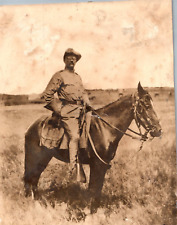
RARE 1898 US PRESIDENT THEODORE ROOSEVELT TYPE I SPAN AM WAR CUBA ORIG PHOTO 136 $419.99
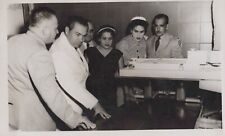
CUBA CUBAN PRESIDENT FULGENCIO BATISTA ZALDIVAR PORTRAIT 1950s ORIG Photo C36 $20.99

CUBA CUBAN PRESIDENT FULGENCIO BATISTA ZALDIVAR PORTRAIT 1950s ORIG Photo C36 $20.99
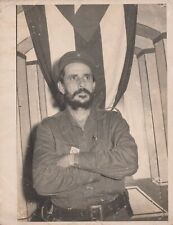
CUBA CUBAN REVOLUTION COMMANDER DE LOS SANTOS PORTRAIT 1960s ORIG Photo C36 $20.99
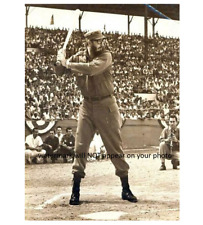
Fidel Castro Playing Baseball PHOTO Cuban President Havana Cuba 1959 $5.78
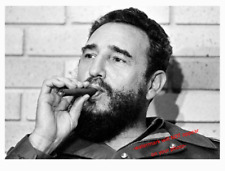
Fidel Castro Cigar PHOTO Smoking Cuban President Cuba $5.78

FIDEL CASTRO CUBAN PRESIDENT COMMANDER CUBA REVOLUTION DBLWT ORIG PHOTO $299.99
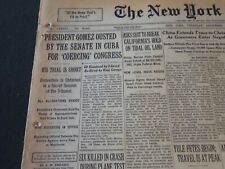
1936 DECEMBER 24 NEW YORK TIMES - PRESIDENT GOMEZ OUSTED IN CUBA - NT 6695 $56.25
|